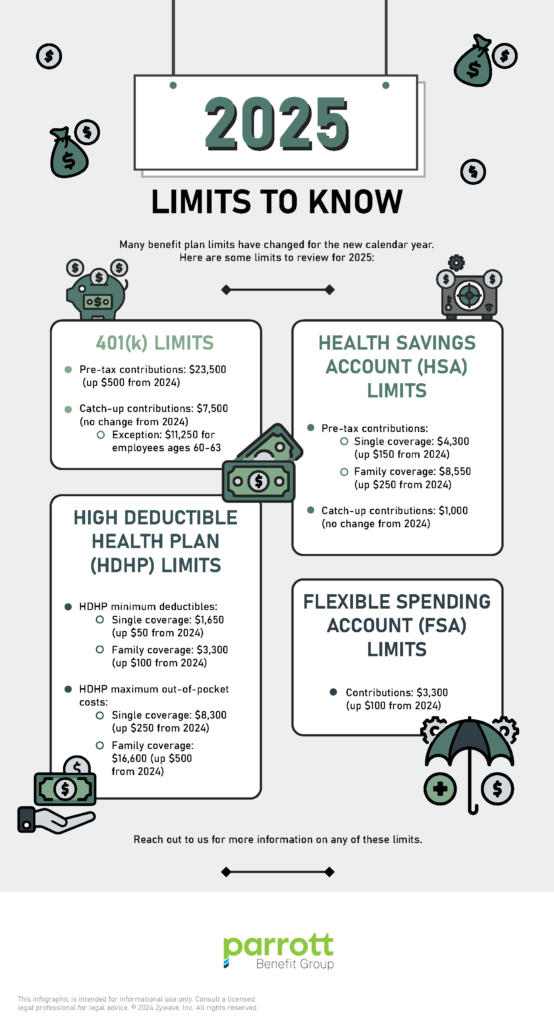Many employee benefits are subject to annual dollar limits that are adjusted for inflation by the IRS each year. The following commonly offered employee benefits are subject to these limits:
- High deductible health plans (HDHPs) and health savings accounts (HSAs);
- Health flexible spending accounts (FSAs);
- 401(k) plans; and
- Transportation fringe benefit plans.
The IRS typically announces the dollar limits that will apply for the next calendar year before the beginning of that year. This gives employers time to update their plan designs and make sure their plan administration is consistent with the new limits.
This Compliance Overview includes a chart of the inflation-adjusted limits for 2025. It also includes the 2024 limits for comparison purposes. Most of these limits will increase for 2025. Note that there are some benefit limits that are not indexed for inflation, such as the dependent care FSA limit and the catch-up contribution limit for HSAs.
Increased Limits
- HSA contributions;
- HDHP limits for minimum deductibles and out-of-pocket maximums;
- Health FSA pre-tax contribution limit;
- Health FSA carryover limit;
- Monthly limits for transportation fringe benefit plans;
- Employees’ elective deferrals to 401(k) plans, pre-tax and Roth; and
- Tax exclusion for adoption assistance benefits.
Unchanged Limits
The following limits stay the same from
year to year because they are not
indexed for inflation:
- Tax exclusion for dependent care FSA benefits; and
- Catch-up contributions to an HSA.
Links & Resources
- IRS Revenue Procedure 2024-25: 2025 limits for HSAs and HDHPs
- IRS Notice 2024-80: 2025 limits for retirement plans
- IRS Revenue Procedure 2024-40: 2025 limits for health FSAs, adoption assistance and transportation fringe benefits
This article is not intended to be exhaustive nor should any discussion or opinions be construed as legal advice. Readers should contact legal counsel for legal advice. © 2024 Zywave, Inc. All rights reserved.


